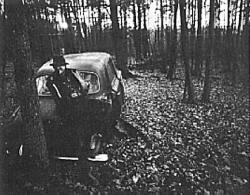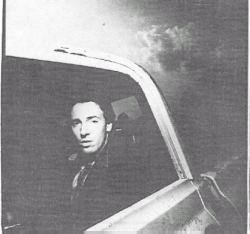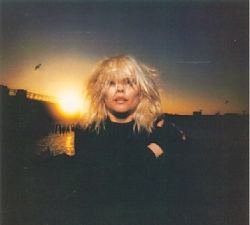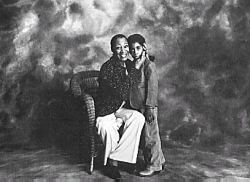July 18, 1986
Press Articles :: Photographers Forum Magazine
Exclusive Interview:
David Michael KennedyBy GRACE SCHAUB
|
Reprinted from the Photographers Forum 1986 |
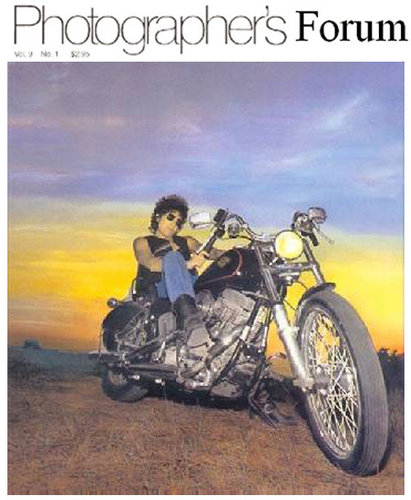
David Michael Kennedy walks out of his darkroom, enthusiastically exclaiming, "There's something so special about palladium printing, and the making of the emulsion ... the quality of the print is beautiful, there is nothing like it. . . "
PF: Isn't it rare these days for a photographer to make his own emulsions?
DK: Everything in photography has become so automatic. The cameras do everything for you. It's nice to go into the darkroom and spend time working to create a fine print. I'm even coating my own paper; and I discovered there are six different formulas for Dektol.
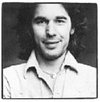 |
Kennedy has many fine prints hanging on the walls of his studio. They are mostly portraits of celebrities he has photographed while on assignment for Spin, Omni or Penthouse magazines. There are also some stunning black-and-white posters done for CBS Records of Isaac Stern, David Johansen, and Hubert Laws. |
PF: These are great portraits, David. Have you had any gallery shows?
DK: I am looking to have gallery shows. That is one reason I am doing palladium prints. I haven't had much experience with shows. In 1975, Barbara Rose of Vogue wrote a piece on established as well as up-and-coming art photographers, and she included me in that piece. I did a show in 1979 at the SoHo Photo Gallery. It was well received. But I don't push getting shows and I don't push in business... it's definitely my weak point.
PF: Do you feel gallery shows are important?
DK: It hurts tremendously not to get your work out there. It's a little troublesome sometimes. I find once I make prints I feel comfortable putting them in a box and filing them for some future time. Showing the work and getting the gratification of someone saying, "Wow, that's really beautiful," is secondary.
PF: But you are a commercial photographer?
DK: Well, my career is a very weird thing.
PF: Let's start at the beginning. What is your background in photography?
DK: I started out in California doing nature photography. I had a little studio in a town called Eureka, way up in the north woods. In the early seventies, I had to come to New York for back surgery and I figured I'd stay for six or seven months and return to Eureka. That was about sixteen years ago. Here I am still in New York; I kind of got stuck here!
PF: For a photography career it's not a bad place to get stuck
DK: Yes and no. The best is here, and you learn the most here. New York has a lot of good points. I'm still here, so it must have something for me. When I got here back in the early seventies I didn't know what I wanted to do, so I assisted a still life photographer for about a year and a half.
PF: Who was that?
DK: Rudy Legname, who was very hot in the sixties. I learned a hell of a lot from Rudy. He did exquisite lighting and was an incredible technician.
PF: What was the most important thing you learned from him?
DK: I learned I did not want to do still life photography. Fooling around all day with props got me a little crazy. But it is a hell of a fantastic way to learn lighting and composition and the technical aspects of photography. I learned a phenomenal amount from Rudy. After working for him, I free-lanced for a while and then decided it was time for me to open my own studio. I did it with one camera, one lens, no money and no book?
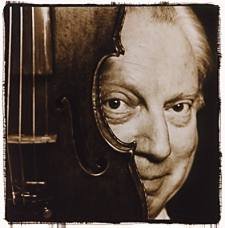
PF: What was your direction in photography at that time?
DK: I really didn't have a direction in mind. I knew I wanted to take pictures, which is where I still am today to a certain extent. So for about a year and a half I futzed around in fashion because it was accessible. Other than still life, fashion is probably one of the easier areas to get started in... it's easy at least to put together a book. You get a roll of film, a pretty girl, and you shoot.
PF: Were you successful at it?
DK: Semi-successful. I was doing things for name designers like Bill Blass and Regina Cravetz and others. I didn't really like the fashion industry. It wasn't quite where my head was at.
PF: A little far from Eureka in spirit, I imagine.
DK: Yes. But I put my book together, brought it up to Benton & Bowles and became friendly with an art director named John Fisher and his assistant, Hillary Vermont. Hillary really liked my work and started giving me good assignments. She moved on to CBS Records' advertising department; that was in the mid-seventies. CBS Records at that time was spending a lot of money on advertising. They had ten designers in the advertising department. Hillary gave me her first project and within a short time I was working for all the designers there. They seemed to like what I did.
PF: What work came out of that period?
DK: The David Johansen poster, the Hubert Laws poster, and others. I did mostly promotional posters for CBS Records.
PF: How long did that last?
"I photographed Bob Dylan at his home in Malibu last December for Spin. There are very few people I get excited about in the industry these days, and he is one of them".
DK: That went well for about two or three years. In the mid-seventies the record industry experienced a crunch and the budgets were cut and I was out in the cold. I made a big mistake that a lot of photographers make. I had one client who I really liked working for and I was making a lot of bucks, so why go out and look for other clients was my attitude. We were shooting two or three days a week, making good money, and then the budget fell apart.
PF: By that time, I imagine you had become well-known in the industry. What followed?
DK: I decided I wanted to do album covers for CBS. But there seemed to be a big rivalry between the art department that handled the album covers and the art department that handled the promotional posters. They had a big design department and artistically I liked what they were doing. I wanted to make that change to do album covers and it was difficult. It took time to get a new book together. A lot of photographers wanted to do album covers at that time. I decided as part of breaking into the field I would write and photograph an article on the top directors in the album cover community in New York. I planned to interview and photograph each one individually in my studio.
PF: How did you go about getting this together and having it published?
DK: I called four or five advertising trade magazines and asked them if they would be interested. The response was generally, "Put it together, it sounds great, we'll see what we can do." Even if some of the art directors didn't want to get involved they felt they should because they didn't want to be excluded from such an article. I focused on CBS because, as I said, I knew who they were, I had worked for them, and I admired what they were doing.
PF: How did it work out for you?
DK: Very well. I got an exceptional portrait of each art director I photographed, they were impressed, and within two months I was shooting album covers. And that's all I did for about two or three years. That, and a little editorial work for a couple of magazines. And then CBS Records had another crunch. I must be a very slow learner, because once again I put all my eggs in one basket. I was shooting a couple of album covers a week, having a ball doing it, photographing interesting people, so I didn't think I needed to give the time and energy to build up other clients.
PF: How much artistic freedom do you have with your clients?
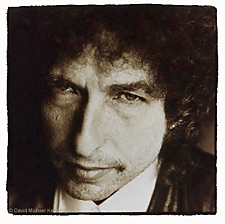
DK: There are times when the art director will have a specific idea and know exactly what he or she wants. At other times, it will be left totally up to me. Sometimes the musicians I photograph are very involved in the photo sessions and have specific ideas and sketches of exactly what they want. There are also times when we just "play around" and let something develop during the shoot.
PF: You have photographed most of the top rock personalities and musicians. I would imagine some of them must be difficult to deal with.
DK: I find it's difficult dealing with anybody. It always amazes me that I am a people photographer, because I find in general, people are difficult to deal with. But I love to photograph people and I think it is because I am trying to understand them.
PF: I feel what photographers choose to photograph is a seeking out and attempting to understand themselves and others. It's a real opportunity to explore human nature.
DK: Yes, and, some of those musicians are real assholes! I just finished a shoot with someone I hate. There were pictures of him all over this studio and every once in a while I see the magazine with his picture on the cover, and it flips me out. I have to turn it over.
|
PF: But you generally like the people you photograph? DK: I feel the photographer has a responsibility to the people he or she photographs. Shows like Richard Avedon's Portrait of the West really bother me. It's not very hard to stand there with your camera and wait until someone is awkward before you push the button. PF: What offends you about Avedon's portraits? 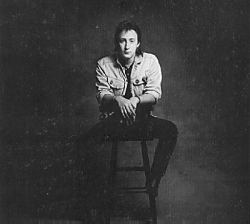 DK: I grew up in the West, and his interpretation is not representative of the West, and anybody who thinks it is, is wrong! I had good buddies who were deer hunters, loggers, truckers, butchers, and they weren't anything like what Avedon's pictures say. Those pictures are about Avedon, not about the people he is photographing. I always felt there is enough shit out there, and if you want to see ugliness in human beings turn on the news, open the Daily News, or visit the morgue. You walk out on the street and you are bombarded by it. I like to find the good that is out there. People seem to buy the bad and ugly interpretations of life. I see a lot of negative eroticism and outlooks in much of the photography of today. It's not the kind of stuff I want to put on my wall, but it seems that people are into it. PF: You don't feel that a photographer has the responsibility to point out society's ills, and "man's inhumanity to man?" DK: I have a great deal of respect for war photographers. That is not the same kind of thing. I think war should be photographed so we can understand what it is, and what we are doing to ourselves. But there seems to be a general swing where some people are into the negative aspects of others. I'd rather find the niceties in the people I photograph. In answer to your question, yes, I like most of the people I photograph. PF: Who do you especially like? DK: Dylan! I photographed Bob Dylan at his home in Malibu last December for Spin. There are very few people I get excited about in the industry these days, and he is one of them. PF: Dylan has always been a favorite performer of mine. DK: I liked him. But I was nervous before I photographed him. I grew up on his music and I had him on a pedestal. I didn't bring an assistant because I know Dylan hates to be photographed. I went by myself, with all my equipment, and it ended up where he helped me coil cords. We spent three or four hours together shooting, and he even made space for another shoot the following day for me. I know he had to keep other appointments waiting while I photographed him. He was good to work with, and one of the exceptional things about him was there were very few surprises, if you know his history and his music you can see it in him and hear it in him. I could feel his music in everything there. PF: Have you encountered a celebrity who showed up for a shoot drunk or stoned? DK: It's happened. Recently, as a matter of fact. You just keep plowing through and shoot a lot of film. Even when you get a nasty person who curses you out and says he is not going to do what you want, eventually, at some point, he will; you just have to keep working. It's difficult sometimes, because there is no formula or plan you can lock into. PF: How do you direct your portrait sessions? DK: I don't like to direct the sessions. I tell the people the less I say during the shoot the better it's going. We usually find out what the person likes to eat or drink beforehand, and we sit down at the dining room table and have something to eat, and talk for a while. My goal is to make the person feel comfortable, Then, we go into the studio and begin the session. It's not a conscious thing. It's more like I wonder what this person is going to do. I wonder what I'll find interesting about him or her. I try to make the whole experience enjoyable, because most people don't have fun in front of a camera. PF: Do you like sitting in front of a camera? DK: I love it! When I get crazy or unhappy, I'll get up in the middle of the night and put a camera on a tripod, hook a cable release and shoot pictures of myself, usually Polaroid, and the next day I'll look and say, "Yeah, I can see how I was feeling." PF: What size format do you use for your work? DK: Primarily I shoot with a 2 1/4 , 35mm is too grainy for me, unless I want the grain and then I shoot 35mm with Agfa 1000. Actually I plan on doing more 4x5 and 8xl0 work. I'd even like to find an 11 x l4 camera.
PF: Who are your favorite photographers? DK: There's a hard question. Weston, Stieglitz, Art Kane, Irving Penn, Paul Strand and Eugene Smith. PF: Did you study photography in school? DK: My first formal education in photography was classes at the New York Institute of Photography, where I learned the basics, and left thinking I was a professional. I had a rude awakening. I wasn't even close. I then went to Brooks Institute in Santa Barbara for about a year and a half-I didn't graduate. Their motto is to create employable professional photographers, and I wasn't sure that was what I wanted to be at that time. I learned a lot more basics and some very technical stuff. Every time we mixed a gallon of Dektol we had to run gray scales on it and plot curves. I couldn't do it today to save my life. After Brooks it was hands-on experience, which I think is the best way to learn.
PF: How long have you been photographing? DK: I enrolled in the New York Institute two months after I first picked up a camera. In the beginning I shot constantly; I still live and dream photography, but back then I did nothing else. I always had a camera, and if I wasn't taking pictures I was in the darkroom. PF: How old were you at that time? DK: I was seventeen. In 1966 or '67, I was with some friends out on Long Island. We were talking late into the night. Everyone else went to sleep and I was wide awake. The sunrise was coming up and it had been raining, so there were dewdrops on the leaves. It was a beautiful sunrise. I spotted a 35mm Contax camera on the mantle above the fireplace, and I really picked it up out of boredom more than anything else. It had a macro lens on it. I went outside and got sucked into the dewdrops on the leaves and the glistening spiderwebs. PF: That was your first experience with a camera? DK: Yes. I loved being able to isolate little pieces of space and time- and that is the day I decided photography was for me. I looked in the paper, saw the ad for the New York Institute of Photography and signed up for classes. PF: How do you like the free-lancer's pace? DK: For three or four weeks I may have lots of work and then there can be a lull for the next three or four weeks. It's not always a steady pace. But I have learned to accept the pace and actually enjoy it. It gives me time to work on my own ideas and projects. For instance, now I am working on a palladium print of Bob Dylan. It is driving me crazy but I have the time to put into it. It's so different from some of the business accounts where the film gets shot, developed, printed and delivered to the art director very quickly. Where some free-lancers get stuck is when they get the idea that because they haven't gotten a call in a week they are never going to work again. Even with bucks in the bank and money coming in they still have a fear of not getting more work. PF: Do you see photography as a performance? DK: Yes, it's like going on stage for me. PF: The studio setting is the stage...
DK: ... and I have to make sure the lights and strobes are going to work, that I have the right film in my camera, and that my assistant loaded the camera correctly. I want the right music to be playing and to be sure my subject is comfortable ... and oh, shit... now I have to make a good photograph ... am I going to do it? I worked for one photographer in California, who shall remain nameless. He was a very well-known photographer. He had a big support crew-there were nine of us full time, plus other staff. One day he came in and everything was set up for the shoot; he was handed a Hasselblad. We were doing bathing suits that day and we had hung a huge clear plastic sheet from the ceiling to simulate a swimming pool. We put a few inches of water in it and arranged the model so that she would be photographed through the plastic. It created an underwater effect.
The Polaroid tests were taken, everything was set and all he had to do was push the button. He took the camera, looked through it, focused, put the camera down, looked at it again, and threw it against the wall. He walked out and disappeared. That was it!
PF: What did you think? DK: I could understand the feeling. it's a pressure business. Everything is on the line when you get up there. After you push the button once or twice the fear is gone. It doesn't matter if it's the biggest celebrity in the world or some total jerk, the important thing is, "Am I going to communicate with this person I am photographing? Will I find something and create a good photograph as a result?"
REPRINTED WITH PERMISSION FROM PHOTOGRAPHERS FORUM MAGAZINE VOL.9 NO. 1 SERBIN COMMUNICATION 614 SANTA BARBARA STREET, SANTA BARBARA, CA. 93101 805-963-0439
|


